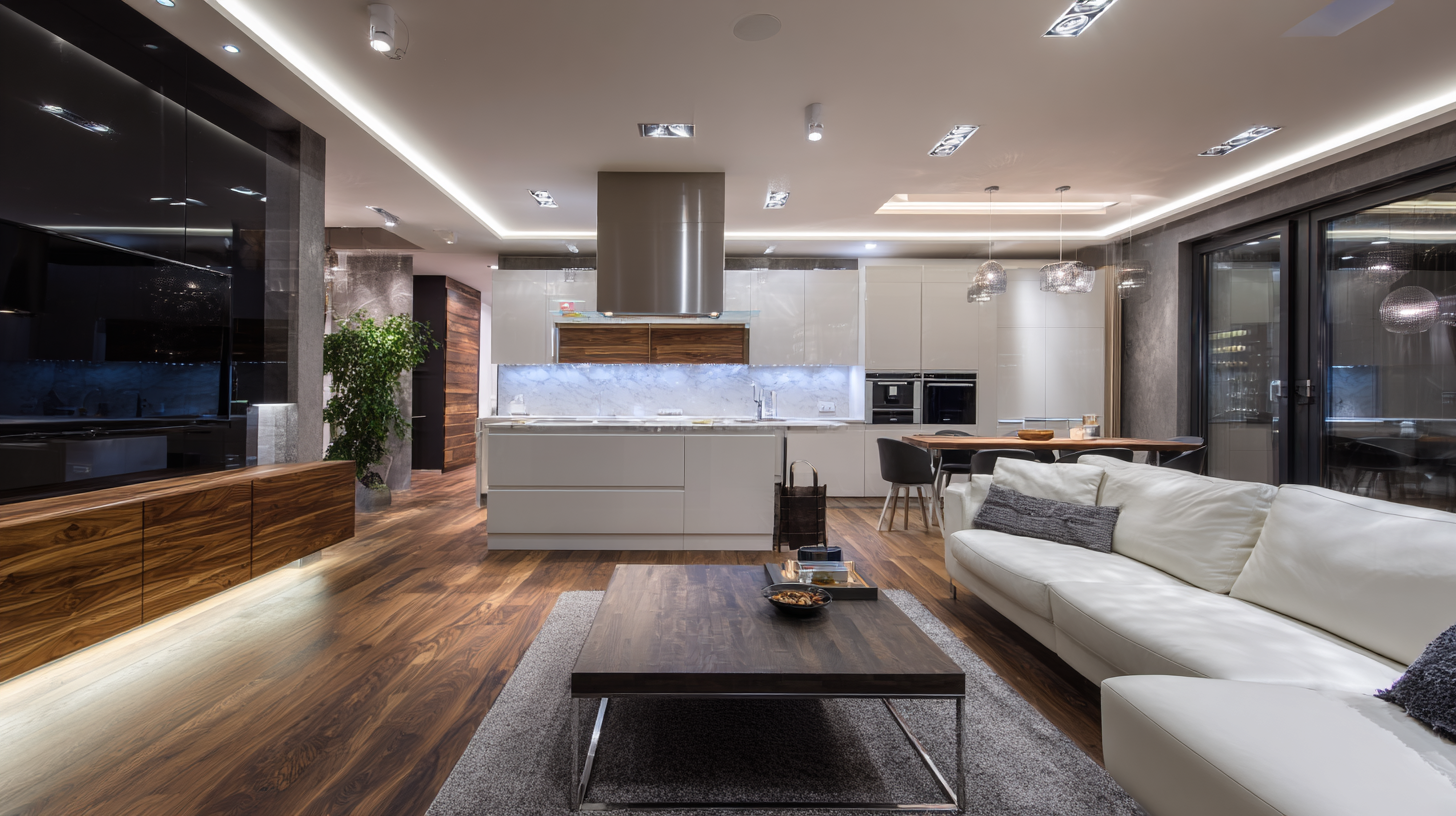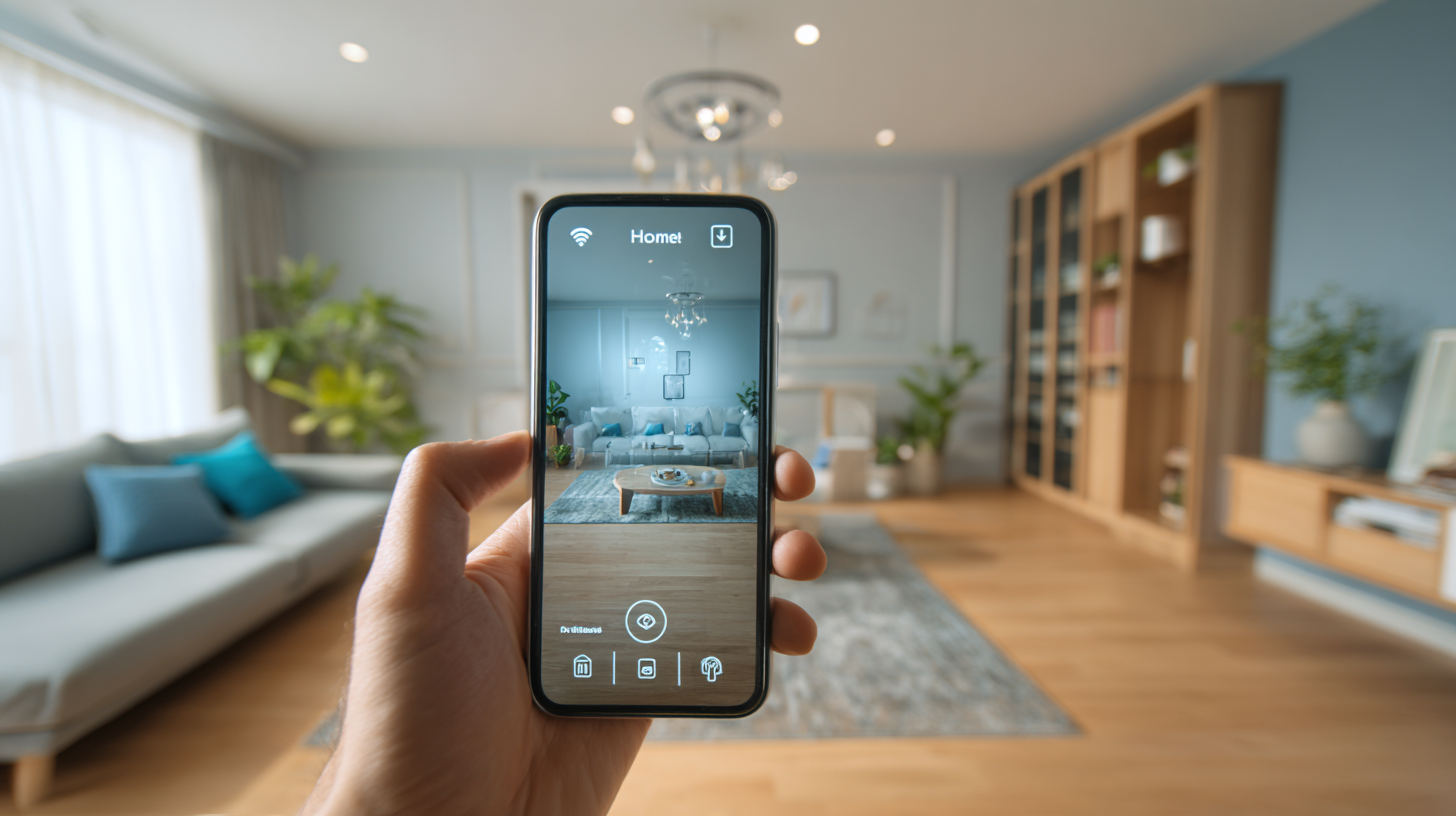
The rise of smart home technology is transforming the way we live, providing innovative solutions that enhance convenience, efficiency, and security. According to a recent report by Statista, the global smart home market is projected to reach over $135 billion by 2025, reflecting a compound annual growth rate (CAGR) of 27%. As consumers increasingly integrate smart devices into their households, the importance of robust after-sales service and manageable repair costs becomes critical. A study conducted by MarketsandMarkets indicates that 61% of users prioritize customer support when choosing smart home products. This highlights a pressing need for manufacturers and service providers to focus on delivering not only cutting-edge technologies but also comprehensive and reliable support systems.

In this blog, we will explore innovative solutions to enhance your smart home experience, with a focus on after-sales service advantages and how they can mitigate repair costs, ultimately fostering greater consumer satisfaction and loyalty.
 Smart home automation is rapidly reshaping modern living, offering unparalleled convenience and efficiency for homeowners.
According to a report by Statista, the global smart home market is projected to reach over $135 billion by 2025, indicating a significant shift in consumer preferences towards automated solutions.
With devices like smart thermostats and lighting systems, homeowners can now optimize energy usage effortlessly. Research shows that smart thermostats can reduce heating and cooling costs by up to 10-12% annually, making homes both eco-friendly and cost-efficient.
Smart home automation is rapidly reshaping modern living, offering unparalleled convenience and efficiency for homeowners.
According to a report by Statista, the global smart home market is projected to reach over $135 billion by 2025, indicating a significant shift in consumer preferences towards automated solutions.
With devices like smart thermostats and lighting systems, homeowners can now optimize energy usage effortlessly. Research shows that smart thermostats can reduce heating and cooling costs by up to 10-12% annually, making homes both eco-friendly and cost-efficient.
Furthermore, integrating smart home technology can significantly enhance daily routines. A study from the Consumer Technology Association (CTA) reveals that nearly 70% of smart home device owners report increased home comfort and control, thanks to automation. Features like scheduling and remote access allow users to manage appliances, security systems, and lighting with ease, contributing not only to convenience but also to a safer living environment. As more families adopt smart home technologies, the focus on seamless integration and user-friendly interfaces will continue to drive innovation in this dynamic industry.
In today's interconnected world, the seamless integration of smart home devices is revolutionizing the way we live. The advent of protocols like Matter 1.4 is a game-changer, enhancing compatibility among various smart home devices and enabling them to communicate effortlessly. This interoperability allows users to create customized environments where devices from different manufacturers work together harmoniously, streamlining control and elevating the overall smart home experience.
Moreover, the impact of advanced technologies such as IoT and AI cannot be overstated. As these innovations continue to evolve, they contribute to the creation of smart cities characterized by intelligent decision-making and efficient resource management. The integration of IoT into our daily lives also enables hyper-personalized experiences, adapting to individual preferences and routines. From AI-enabled household appliances to enhanced connectivity options, the future promises a more sustainable and responsive living environment where everything works in unison for maximum convenience and efficiency.
| Device Type | Functionality | Connectivity | User Control | Compatibility |
|---|---|---|---|---|
| Smart Thermostat | Temperature Control | Wi-Fi | Mobile App | Voice Assistants |
| Smart Light Bulbs | Adjustable Brightness and Color | Bluetooth, Zigbee | Voice or Mobile App | Smart Hubs, Voice Assistants |
| Smart Security Cameras | Home Monitoring | Wi-Fi | Mobile App, Web Interface | Smartphones, Tablets |
| Smart Locks | Keyless Entry | Bluetooth, Wi-Fi | Mobile App, Keypad | Smartphones, Voice Assistants |
| Smart Plugs | Remote Control of Appliances | Wi-Fi | Mobile App, Voice Control | Various Home Electronics |
As smart home technology continues to evolve, enhancing security has become a top priority for homeowners seeking innovative solutions. The RFID lock market is projected to witness significant growth, with an expected market size reaching $1.65 billion by 2032, driven by an increasing demand for advanced security solutions across residential, commercial, and industrial sectors. Notably, the share of connected RFID locks is anticipated to rise, highlighting the trend toward integrated security systems that offer both convenience and safety through technologies such as passive and active RFID.
In parallel, the smart home security camera market is set for substantial expansion, with estimates forecasting a market value soaring from $79.73 billion in 2025 to $523.51 billion by 2033. This growth underscores a broader movement toward comprehensive home surveillance solutions that utilize high-definition camera technology to provide real-time monitoring and enhanced security features. As consumers increasingly prioritize safety, the integration of these technologies into the smart home ecosystem will redefine how residents manage and protect their living environments.
Furthermore, as automation becomes commonplace, the demand for automated products like smart curtains is projected to reach $3.34 billion by 2032, with a compound annual growth rate of 5.48% from 2024 to 2032. This trend reflects the growing consumer interest in increasing home convenience while simultaneously enhancing privacy and security through advanced automated systems.
In today’s rapidly evolving technological landscape, smart home energy management plays a crucial role in optimizing energy consumption and creating sustainable living environments. With the integration of advanced digital solutions, homeowners can now leverage innovative tools to monitor and control energy usage in real time, leading to significant cost savings and enhanced efficiency. For instance, deploying smart thermostats and automated lighting systems not only reduces energy waste but also promotes eco-friendly practices, which are becoming increasingly essential in our fight against climate change.

Universities are also stepping up their game in energy management as they strive to create resilient and efficient campuses. By utilizing smart grid technology, educational institutions can optimize energy distribution across multiple buildings, ensuring that resources are allocated effectively and sustainably. Embracing innovations like demand response optimization and energy-efficient construction techniques allows these campuses to significantly lower their operating costs while providing a modern, attractive environment for students. As the renewable energy industry flourishes and digitalization becomes more integral, the focus on smart energy solutions will continue to energize both private homes and institutional buildings alike.
In today's rapidly evolving technological landscape, personalization and control have become essential components of the smart home experience. Homeowners are increasingly seeking systems that adapt to their unique lifestyles and preferences. This shift towards customization allows users to tailor their smart home devices, from lighting to temperature regulation, to suit their daily routines. By integrating user-friendly applications and voice activation features, homeowners can effortlessly adjust their environments, thereby enhancing comfort and convenience.
Moreover, the focus on user experience extends beyond mere functionality. Innovative solutions are emerging that prioritize intuitive interfaces and seamless integration between various smart devices. For instance, smart home ecosystems are now designed to learn from users’ habits, offering predictive adjustments that anticipate needs before they are even expressed. This level of sophistication not only provides greater control but also fosters a sense of familiarity and ease, ensuring that the technology aligns harmoniously with everyday life. As the smart home market continues to grow, embracing personalization and enhanced control will be key to delivering an unparalleled user experience.
This chart illustrates user satisfaction levels across various dimensions of smart home personalization and control. As shown, user control and device integration score the highest in user satisfaction, while data security remains a concern among users.
